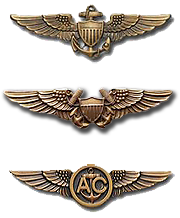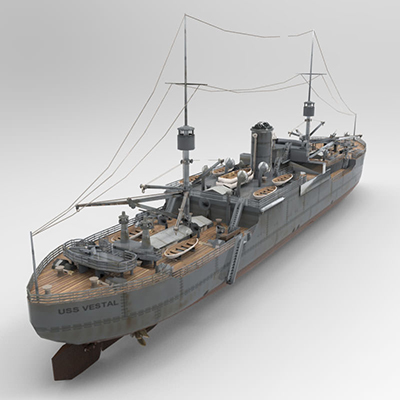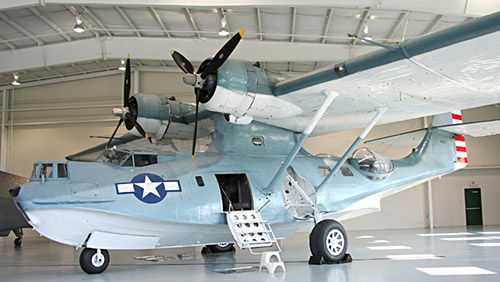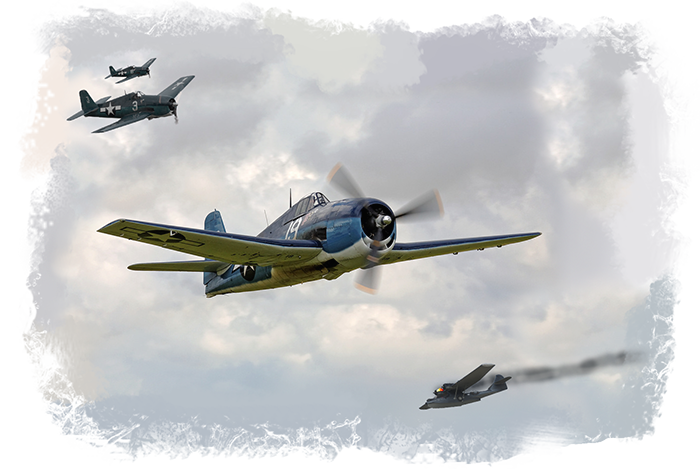WWII Seaplane Sea Stories - 1942

Bob Kunkle was VP-45’s Maintenance Officer from 1950 -53. There are not many Navy Officers who have had such a varied and distinguished career, and his is an inspiration to us all. Those members who served in WWII will readily understand this story; others may have to think about it and can only imagine what it was like to be in his shoes during the events narrated below.
From Bob Kunkle: "Received your letter and request for a few highlights concerning my 33 years active duty - will try and keep it short.
A bit of personal background: I grew up on a farm in Indiana. After graduating from high school in 1936 and, because of financial matters and the job market being less than poor, it was just not in the cards for any college, I wound up enlisting in the Navy. After boot camp in San Diego in 1937, I was assigned to the USS Vestal (see right) and its aviation detachment that took care of the cruiser planes in the Pacific. The O-in-C of our unit, one CWO and ex-member of the Lafayette Esquadril of WWI, took a liking to me and my desire to fly and helped me apply for flight school. After some 3 years, and as an AMM2 aboard USS Savannah, I got orders to Pensacola. I received my wings 1 April 1941 and was assigned to VP-S 2 at Norfolk.
any college, I wound up enlisting in the Navy. After boot camp in San Diego in 1937, I was assigned to the USS Vestal (see right) and its aviation detachment that took care of the cruiser planes in the Pacific. The O-in-C of our unit, one CWO and ex-member of the Lafayette Esquadril of WWI, took a liking to me and my desire to fly and helped me apply for flight school. After some 3 years, and as an AMM2 aboard USS Savannah, I got orders to Pensacola. I received my wings 1 April 1941 and was assigned to VP-S 2 at Norfolk.
The squadron had PBYs (see below) and flew out of GTMO and Panama until WWII, then Brazil and Bermuda doing the usual anti-sub and air/sea search and rescue. My crew picked up the first 26 survivors off Brazil. My PPC could not get the plane off the water and finally let me try it. Over his objections I got rid of our four 650 pound depth charges and made it out OK.
 One incident I think may be of interest: We were operating off the tender, USS Green. One night during a severe storm the ship broke its mooring and ended up directly under the balcony of the biggest house of ill repute in Natal. Bermuda was next, and I was lucky to be assigned to a crew headed by Freddie Haig who had just been promoted to CWO and PPC. A couple of events may be of interest.
One incident I think may be of interest: We were operating off the tender, USS Green. One night during a severe storm the ship broke its mooring and ended up directly under the balcony of the biggest house of ill repute in Natal. Bermuda was next, and I was lucky to be assigned to a crew headed by Freddie Haig who had just been promoted to CWO and PPC. A couple of events may be of interest.
After a daylong search east of Bermuda we were finally on the last leg home. Just at dusk we spotted a sub wake and Freddie promptly attacked. I was in the bow and was ordered to drop the whole load on command. Well, yours truly did just that…. and we tallied a direct hit and blew the waterspout to pieces.
Another time out of Bermuda we spent a bit too long on a last minute sub search and discovered that we only had enough fuel to reach Floyd Bennett Field, New York City. Unfortunately we approached after dark and caused one of the first NY city blackouts. Ho-hum, just another day.
Still in Bermuda, the Navy decided some of us APs should be commissioned and I was made CWO and PPC. In the fall of 1942 the squadron was ordered to southwest Pacific. After regrouping and flying out of Kaneohe Bay we proceeded to the Solomons and finally Perth, Australia. About this stage we painted the planes black and became one of the first "Black Cat" squadrons. We also got rid of the bombsight and made room for four fixed 50-cal. guns. These were used primarily for strafing small shipping and troops in the New Britain and New Guinea areas. (Image to right is a typical "Black Cat" PBY)
was ordered to southwest Pacific. After regrouping and flying out of Kaneohe Bay we proceeded to the Solomons and finally Perth, Australia. About this stage we painted the planes black and became one of the first "Black Cat" squadrons. We also got rid of the bombsight and made room for four fixed 50-cal. guns. These were used primarily for strafing small shipping and troops in the New Britain and New Guinea areas. (Image to right is a typical "Black Cat" PBY)
The squadron was quite active against Jap shipping. I got involved one night west of Rabaul with a couple of Jap DDs, one of which never made it back to port. The Navy decided to award me the Air Medal for sinking it. The squadron finally was sent to rest camp for a week south of Brisbane, Australia.
When we got back to flying out of the Admiralty Islands they sent us out in daylight to find the Jap fleet. My crew spotted some ships and, as we tried to get close enough to find numbers and their course, my copilot spotted Jap planes attacking us. I headed for the water when  all hell broke loose. They got the starboard engine on fire, shot off my aileron controls and dumped all the fuel from the metal tank (see image to left). The Jap planes turned out to be four F6Fs from Task Force 58! Anyway I ordered the crew not to return fire. After three or four more tries they left us. Meantime I had gotten rid of our bombs and, after bouncing off the water a couple times, managed to get the engine fire out and restore power. By using the engines and rudder to help steer, we managed to get back to the tender. The crew had stuffed blankets, mattresses and anything else available in the gaping holes in the hull to keep us afloat long enough after landing to have the tender hoist us aboard. This action resulted in my being awarded the Distinguished Flying Cross. We were very fortunate that day. One man back aft was hit and the co-pilot took a couple through his life jacket. They found a couple of incendiaries in our rubber tank. I’ve still got some of the scraps and someday I hope to walk in to a bar and hear four F6F jockeys bragging about how they took care of an old Black Cat.
all hell broke loose. They got the starboard engine on fire, shot off my aileron controls and dumped all the fuel from the metal tank (see image to left). The Jap planes turned out to be four F6Fs from Task Force 58! Anyway I ordered the crew not to return fire. After three or four more tries they left us. Meantime I had gotten rid of our bombs and, after bouncing off the water a couple times, managed to get the engine fire out and restore power. By using the engines and rudder to help steer, we managed to get back to the tender. The crew had stuffed blankets, mattresses and anything else available in the gaping holes in the hull to keep us afloat long enough after landing to have the tender hoist us aboard. This action resulted in my being awarded the Distinguished Flying Cross. We were very fortunate that day. One man back aft was hit and the co-pilot took a couple through his life jacket. They found a couple of incendiaries in our rubber tank. I’ve still got some of the scraps and someday I hope to walk in to a bar and hear four F6F jockeys bragging about how they took care of an old Black Cat.
Anyway, I’ll stop this nonsense and hope it may bring back some memories to a few of the remaining. After the war I married a gal that I still have, thank God. Have a family of 3 sons, all of which have served in Naval Aviation. Soon one will put on his broad stripes this summer. Other duties included a PBM squadron, VP-45 in Coco Solo, CZ; VR-2 (Mars Boats); and VR-21, all hauling the brass, etc. Retired as a CDR in 1970 after a tour as Exec of NAS Jacksonville, and Director of Training at NATTC. Respectfully, Bob Kunkle
Send questions, comments or suggestions regarding this website to: vp45assoc@vp45association.org
Copyright © 2005 PATRON FOUR FIVE ASSOCIATION


